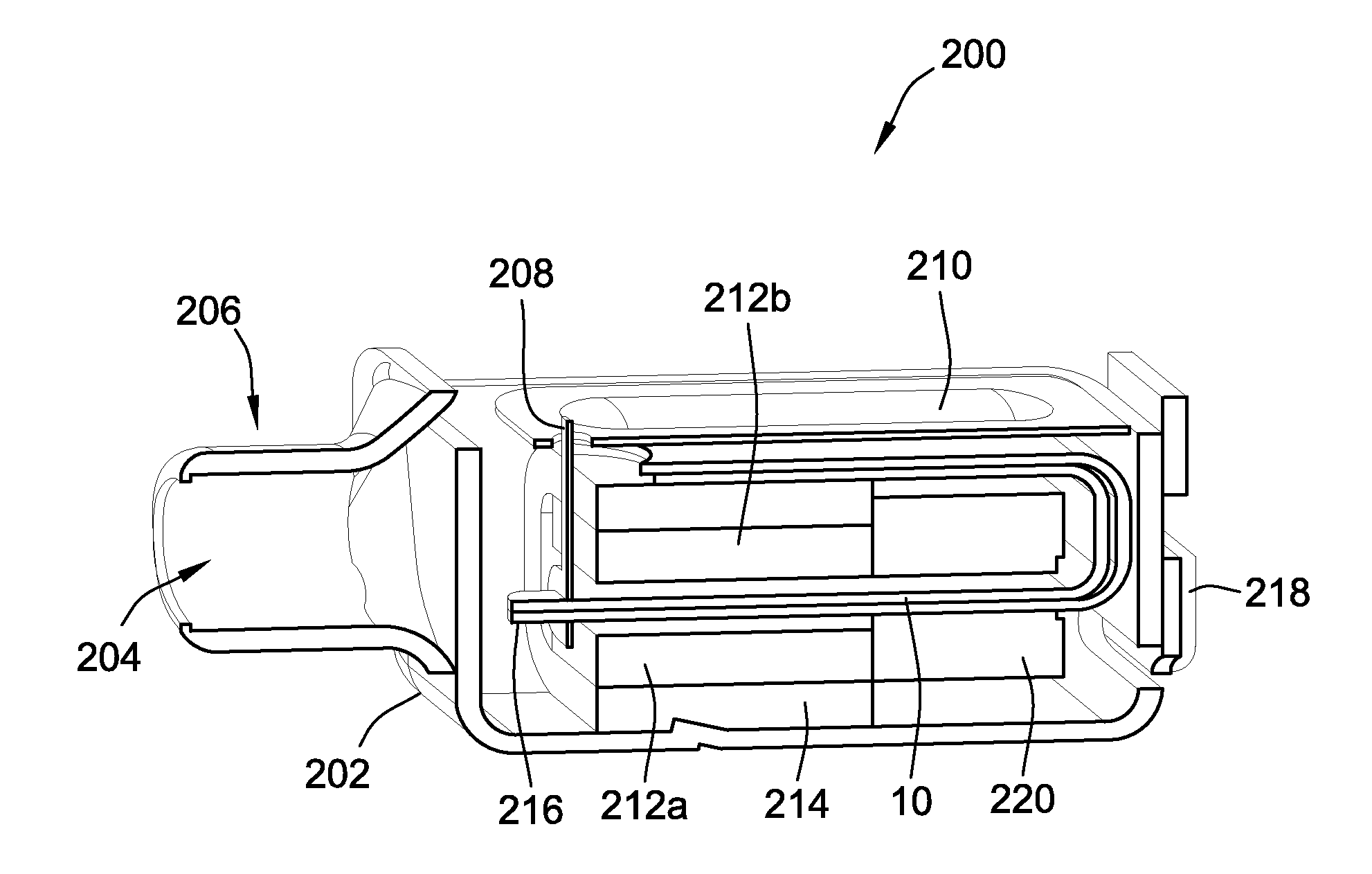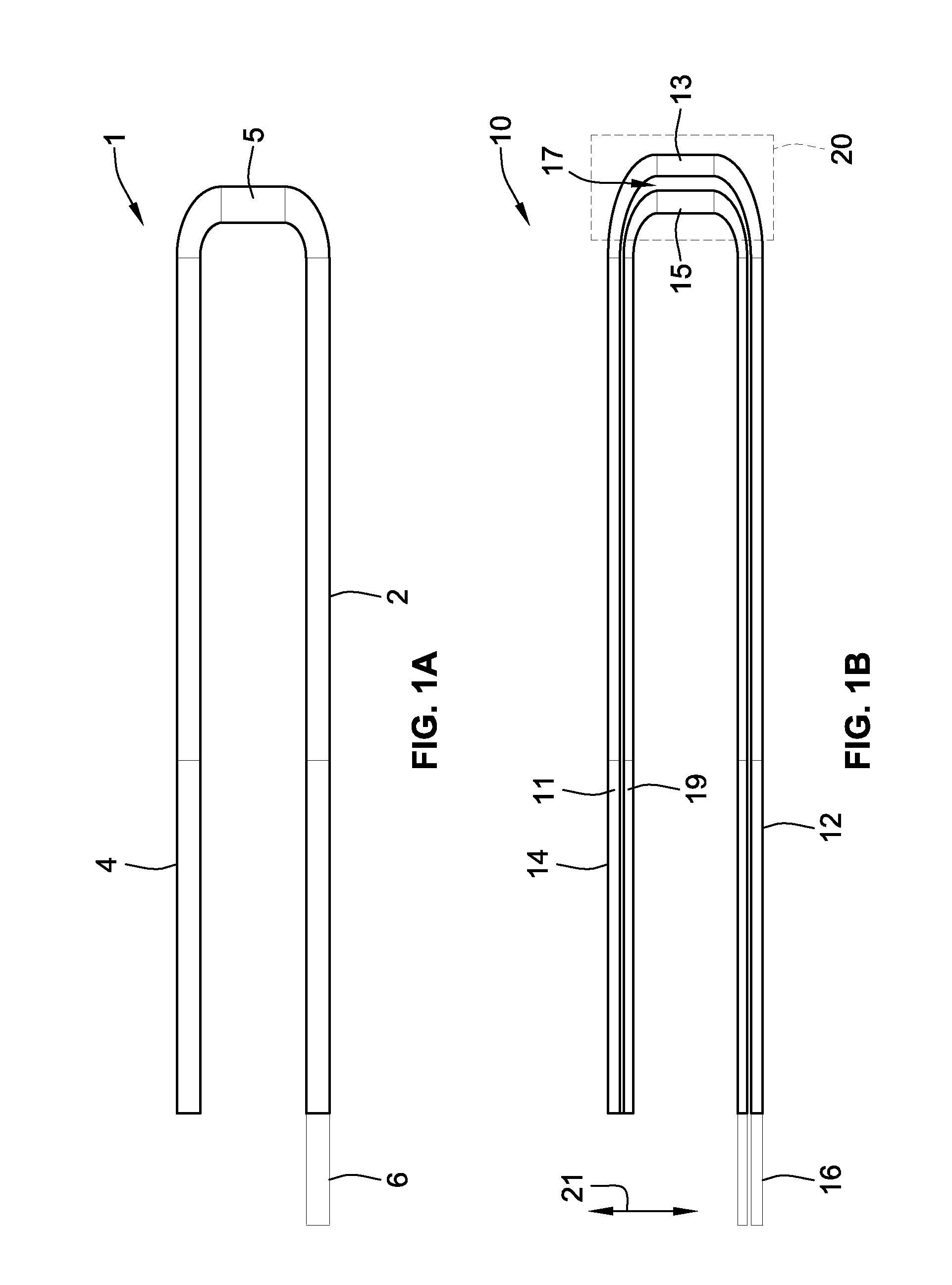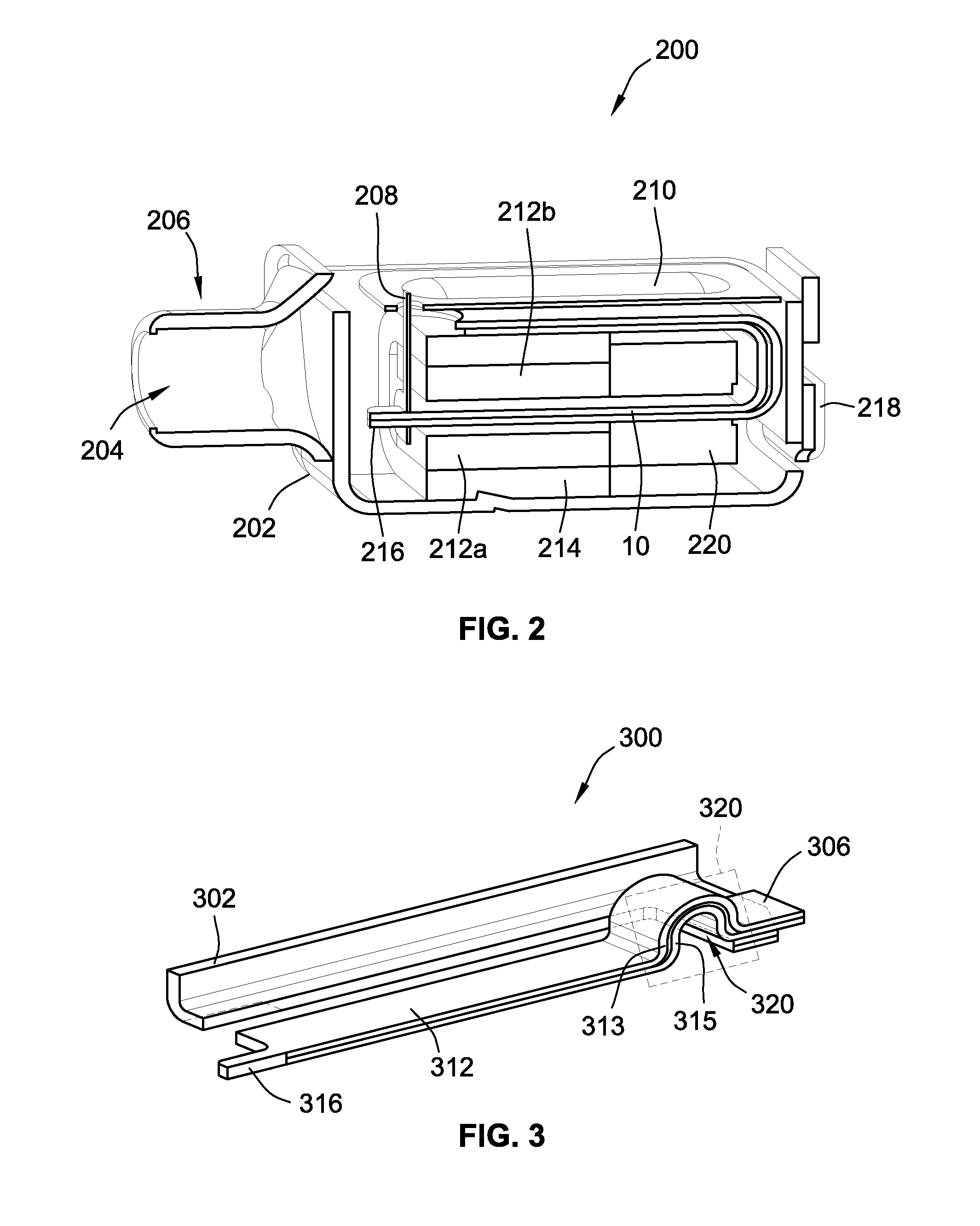Multi-layer armature for moving armature receiver
a technology of moving armatures and receivers, which is applied in the direction of electrical devices, dynamo-electric machines, electrical transducers, etc., can solve the problem that the armature does not provide a significant improvement in the maximum deflection of the armatur
- Summary
- Abstract
- Description
- Claims
- Application Information
AI Technical Summary
Benefits of technology
Problems solved by technology
Method used
Image
Examples
second embodiment
[0038]FIG. 3 is a partial cross-sectional view of an E-shaped armature 300 in accordance with the invention. A residual portion of the E-shaped armature 300 may have a shape similar to the shape of E-shaped armature depicted on FIG. 4.
[0039]The E-shaped armature 300 comprises a flat elongate armature leg 312 forming a middle or central leg of an E-shaped armature outline. A flat and bent first outer leg 302 extends substantially parallelly with the flat elongate armature leg 312 while a symmetrically positioned and similarly shaped second outer leg has been left out of the illustration for simplicity. The flat elongate armature leg 312 is deflectable relative to a stationary portion of the E-shaped armature and comprises a narrowed distal leg portion 316 that may be used as attachment point for a drive pin or rod. A proximate leg portion 306 is mechanically and magnetically attached to a shared coupling leg or keeper. The shared coupling leg functions to mechanically and magneticall...
third embodiment
[0041]FIGS. 4a) and 4b) illustrate a perspective view and a cross-sectional view, respectively, of an E-shaped armature in accordance with the invention. As illustrated in FIG. 4a), the E-shaped armature 400 comprises a first or upper armature layer 413 positioned adjacently to a second or lower armature layer 415. Respective surfaces of the upper and lower armature layers are placed adjacently to each other only separated by a thin intermediate layer or gap 417. As illustrated, the displacement region extends between the first and second armature layers 413, 415 throughout the entirety of their adjacent surface areas as opposed to the embodiment disclosed above in connection with FIG. 3 where the displacement region 320 is limited to a certain sub-section of the E-shape armature 300.
[0042]Each of the upper and lower armature layers 413, 415 furthermore comprises a pair of bent upwardly or downwardly extending flaps or elbows 420, 421, respectively. The flaps 420, 421 form part of a...
PUM
 Login to View More
Login to View More Abstract
Description
Claims
Application Information
 Login to View More
Login to View More - R&D
- Intellectual Property
- Life Sciences
- Materials
- Tech Scout
- Unparalleled Data Quality
- Higher Quality Content
- 60% Fewer Hallucinations
Browse by: Latest US Patents, China's latest patents, Technical Efficacy Thesaurus, Application Domain, Technology Topic, Popular Technical Reports.
© 2025 PatSnap. All rights reserved.Legal|Privacy policy|Modern Slavery Act Transparency Statement|Sitemap|About US| Contact US: help@patsnap.com



